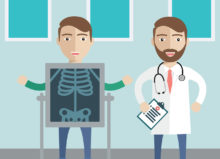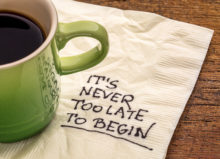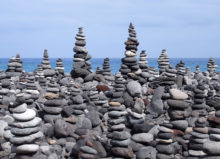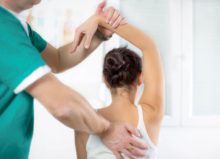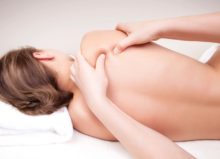Standing Up
The simple acts of standing tall or walking are less simple than they seem.
Consider the stereotypical image of an elderly person hardly able to get out of a chair, bowed under the weight of gravity, shuffling down the street with a walker. What has contributed to this elderly person’s inability to stand upright or stride down the street? Is it the effects of gravity? Or the cumulative effects of old injuries finally exacting their revenge? Or both?
Gravity exerts force on our bodies throughout our lives. It stresses every cell, challenging our bodies to strengthen and fortify on both a micro and macro level. Our circulatory, skeletal, muscular, and digestive systems all have to contend with this force. The downward pull of gravity may, over time, overwhelm our resilience. Blood pools in our legs, bones collapse in on themselves, muscles surrender under the load, and our digestion strangles itself for lack of buoyancy.
In addition, old injuries that were once hardly noticed—perhaps a minor fall or a twisted ankle—may also come back to haunt.
When we are young, we are elastic and bouncy. Unless we have a disability or obvious injuries or broken bones, we usually just pick ourselves up after falling, dust ourselves off (perhaps after a comforting hug from a parent), and head back to our play. Even if we have soft tissue injuries that leave us sore for a week or longer, we usually simply keep going with no thought of rehabilitation, and no worry about long term consequences of these soft tissue injuries.
However, we are usually left with some small telltale sign of the injury after the inflammation subsides and the acute phase of healing is finished. Although most or all of the pain associated with the injury has subsided, scar tissue and adhesions have been left behind. Adhesions translate into stuckness. Later, when we challenge and work the injury site beyond its restricted capacity, these adhesions tear and re-inflame.
As we move around or exercise, these limiting forces left over from old injuries restrict our movement in small ways at first. Our bodies adjust to these limitations, finding ways to compensate. And our bodies are miraculous in this capacity to make good of a tight and restrictive structure. Inside this capacity is the formation of patterns of movement that initially make movement possible, but later develop into their own restrictive patterns that cause other and more significant compensations.
But while gravity is a fact of life on this earth, and injuries, small and not so small, the likely consequences of activity, not all elderly bodies cave in on themselves. Some people stand and walk with grace well into their nineties. How might we increase the odds that we could be among them?
Even something as deceptively simple as shallow breathing can limit our range of movement. Many factors can interfere with the ability to take a full breath. Emotions such as fear can cause us to tighten the diaphragm and other auxiliary breathing muscles. Injuries from car accidents may have shortened the neck muscles attached to our ribs. Seatbelt impact may have crushed our ribs and damaged muscles and facial planes, limiting the free gliding necessary for full breath.
With a full breath, our belly swells freely as our diaphragm contracts and descends into the abdominal space. Our sternum elevates, guiding the ribs up and away from the spine. Simultaneously the ribs widen, giving maximum girth and capacity to the thoracic cavity. Reaching over our head can add the last top up to a deep, full breath.
Full, deep breathing is something we can learn and practice.
What about standing and walking?
How we stand in gravity with grace and walk with ease starts at our feet. Since our connection to and bounce away from the earth is generated by our feet and legs, it is vital that our bodies have a solid connection to the ground. This stability gives us the confidence to spring up and move forward.
An equally vital element for moving forward is spontaneity. With such a relatively small base for movement, our nervous system must be vigilant as it constantly adapts to where we are in space, negotiating a middle ground between stability and spontaneity so that both are present.
As our base lifts and propels us forward, we must balance our upper body accordingly to allow our body to move as a coordinated whole. The lift derived from our feet and legs is a part of our structure which is continuous through our core. This lift runs through our torso and into our arms and up through our head. This lift gives us the experience of length as we step forward and upward.
As we bring our sense of lift and length into movement, we engage this action from our physical center, from which many muscle originate. As a lever lifts from its fulcrum, so our back, legs and arms are anchored and propelled from these points of firm support. As this center generates movement, that movement reverberates and is reflected throughout our whole structure. As the lumbar spine lengthens back, we flex and step out with the unsupporting free leg, and the supporting leg lifts through the pelvic floor, engaging the thorax at the heart level. This repeated lift and shift forward creates the momentum necessary to sustain a graceful gait.
To facilitate this ease of stepping forward, our extensors actively release our stepping leg so it has freedom stepping out. This stepping is performed from the support of the anchored side. It is the falling back of our spine that provides the counterbalance to the stepping forward leg. Our net momentum is maintained by the overall inclination of our stature towards direction of movement.
As our legs move, and the pelvis and torso lengthen, an array of macro and micro movements culminate in a relatively stable orienting position of our head. The head is the epicenter of orientation and reference for all movements throughout the body.
As we walk, our central nervous system collects data concerning external circumstances. The law of gravity, our visual field, surrounding sounds, the force of winds, etc. all connect with internal data related to body position, muscle tension, momentum and movement intention.
All these things must work together for our bodies to coordinate a graceful shift from position to position, moment to moment.
And we may learn to practice these simple acts—breathing, standing, walking—in more optimal ways with more conscious attention, so that we can move forward more in our lives with greater ease and freedom.

